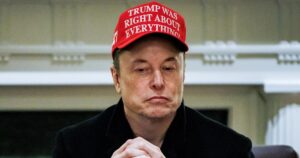Key takeaways:
- Former President Donald Trump’s realignment of U.S. foreign policy favors Moscow over Kyiv, disrupting decades of bipartisan approaches and sparking domestic and international discussions.
- A tense Oval Office meeting between Trump, Vice President JD Vance, and Ukrainian President Volodymyr Zelenskyy highlighted the growing U.S.-Ukraine divide, with the U.S. stepping back from anti-Kremlin measures.
- This policy shift has unsettled European allies and is supported by conservative populists, suggesting a strategic recalibration with potential long-term implications for international relations and Eastern European power dynamics.
In a significant shift in U.S. foreign policy, former President Donald Trump has initiated a realignment that favors Moscow over Kyiv, marking a departure from the longstanding bipartisan approach toward Russia. This pivot has disrupted decades of hawkish policies and has sparked discussions both domestically and internationally. The change in stance has been particularly notable given the historical context, as every American president since the fall of the Soviet Union has attempted to reset relations with Russia, often with limited success.
The recent developments have drawn considerable attention, especially following a tense meeting in the Oval Office between Trump, Vice President JD Vance, and Ukrainian President Volodymyr Zelenskyy. During this meeting, Zelenskyy sought to address concerns with the U.S. administration, which has been stepping back from stringent anti-Kremlin measures. The encounter highlighted the growing divide between the U.S. and Ukraine, as Trump and Vance maintained a posture that some have interpreted as dismissive of Ukrainian interests.
This shift in U.S. foreign policy has unsettled allies in Europe, who have traditionally relied on American support to counter Russian influence in the region. The move has also been met with enthusiasm from conservative populists who advocate for a reduced focus on Ukraine. The realignment suggests a broader strategic recalibration that could have lasting implications for international relations and the balance of power in Eastern Europe.
The implications of this policy shift are still unfolding, as the international community watches closely to see how these changes will affect global dynamics. The U.S. administration’s new approach may lead to a reevaluation of alliances and strategies, as countries adjust to the evolving geopolitical landscape. As the situation develops, the world will be observing how these changes influence both regional stability and the broader international order.



Be First to Comment